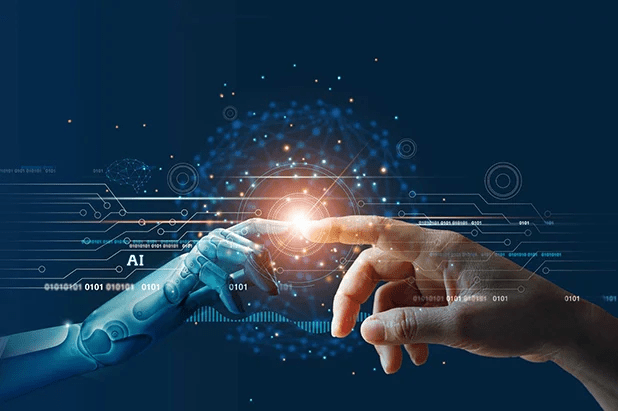There was a time when self-driving cars, voice-enabled communication systems, and smart cities etc. were things that you saw only in sci-fi movies… think Back to The Future, Minority Report, Her, etc. Life today, on the other hand, seems like a page out of these movies… Autonomous cars are becoming a reality, cities and homes are becoming smarter with more connected devices, our phones are talking to us (quite literally), eCommerce sites are telling us what we prefer before we even tell them. Everyday objects are becoming increasingly interconnected and responsive to achieve an understanding of context. Take the self-driving autonomous car. How does it know when to push the brakes and avoid a collision? How do street lights know when to switch off in the absence of people? The answer lies in Machine Learning and Artificial Intelligence, two technologies that are rapidly changing the world that we live in.
Machine Learning and Artificial Intelligence deliver tremendous value, which is evident in their growing mainstream and commercial applications. Industries such as healthcare, aviation, defense, banking and finance, IT enterprises, etc. are increasingly leveraging these technologies to better their service offerings and for competitive advantage. However, while Machine Learning and Artificial Intelligence are inter-related they are under no circumstances, interchangeable. In this blog, we take a look at where Machine Learning ends and Artificial Intelligence starts.
The Definition
To begin with, let’s understand that Machine Learning technology lies within the sphere of Artificial Intelligence, a subset that allows a program to ‘learn’ from experience that comes from data. As detailed in ‘Artificial Intelligence: A Modern Approach’ by Stuart Russell and Peter Norvig, it involves the use of inferential statistics to generate self-learning algorithms to evolve behaviours from empirical data.
Artificial Intelligence, a term coined in 1965 by John McCarthy, is a much wider field that leverages a broad set of algorithms, methods, and technologies that make a piece of software smart and more human-like. The goals of Artificial Intelligence include knowledge acquisition, planning, reasoning, communication via natural language processing, and perception understanding so that it mimics human intelligence.
The Application of Data
Both Artificial Intelligence and Machine Learning utilise huge volumes of data to come to intelligent conclusions. However, the application of data in the two is a little different. Machine Learning, as mentioned earlier, is about leveraging data to create models without being explicitly programmed that can be used by Artificial Intelligence to build machines that are capable of intelligent behaviour.
Concepts of Machine Learning, Neural Networks, Deep Learning, robotics, natural language processing, automated reasoning etc. fall under the purview of Artificial Intelligence. Nidhi Chappell, head of machine learning at Intel says “AI is basically the intelligence – how we make machines intelligent, while machine learning is the implementation of the compute methods that support it. The way I think of it is: AI is the science and machine learning is the algorithms that make the machines smarter.” So simply put Machine Learning becomes a great enabler for Artificial Intelligence.
With the help of Machine Learning, data scientists are able to apply complex mathematical and statistical calculations repeatedly to large data sets and make high-value predictions without any human interactions. Considering the growing volumes of data, data scientists need fast moving data modeling streams that can analyse this data at a much faster pace. According to Thomas H. Davenport, Director of Research at the International Institute for Analytics, and a Senior Advisor to Deloitte Analytics, “Humans can typically create one or two good models a week; machine learning can create thousands of models a week.”
The Role of Artificial Intelligence
Once Machine Learning processes the data and makes it more intelligent, Artificial Intelligence steps in.
- Artificial Intelligence uses its computational resources that allow the machine to think like a human and make logical deductions for the task presented and come up with solutions without external intervention.
- The aim of Artificial Intelligence is to thus humanise machine conversations and make them capable enough to achieve human-level performance for all cognitive tasks.
- Artificial Intelligence uses machine learning inputs to create machines that can process inputs to make decisions and take real-time action. For example, a single Artificial Intelligence agent powered by Machine Learning can analyse billions of financial transactions to identify fraudulent activity clusters or process decades of educational data to identify which interventions or programs bettered long-term graduation rates.
It is when Machine Learning and Artificial Intelligence come together that a data product such as the self-driving car can be propositioned as the world’s safest and most efficient vehicle. Take Google Maps for example. It employs Machine Learning and Artificial Intelligence to accept an explicit demand (that of going from one place to another) and attempts to satisfy that demand as efficiently as possible by evaluating the traffic route, planning the best route, and reorienting itself if the user takes a wrong turn. The new wave of AI assistants such as Siri, Amazon’s Echo etc. are built using Machine Learning algorithms but leverage Artificial Intelligence features of natural language processing or automated reasoning and have human-like, intelligent conversations with the user.
As data endpoints are growing incrementally, leveraging Machine Learning and Artificial Intelligence in the fields of Computational finance, Gaming, Cheminformatics, Bioinformatics etc. are becoming more mainstream. The success of Machine Learning and Artificial Intelligence projects such as the supercomputer Watson predicting patient outcomes more accurately than physicians or the Deep Blue computer defeating world chess champion Garry Kasparov and the application of Machine Learning algorithms by companies such as Facebook, Google, Amazon, Netflix etc. are testament to that fact that we are indeed, moving to a future that is not too far from the movies we have been watching.



